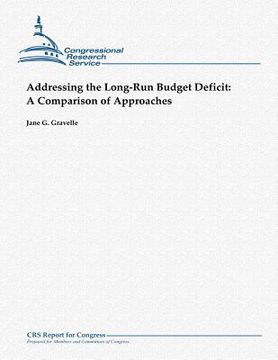Reseña del libro "Addressing the Long-Run Budget Deficit: A Comparison of Approaches (en Inglés)"
A small share of federal spending is for direct provision of domestic government services, which many people may think of when considering federal spending. Since this spending is normally about 10% of total federal spending and about 2% of GDP and deficits excluding interest are projected to be as much as 7.7% of GDP by 2037, cutting this type of spending can make only a limited contribution. Transfers and payments to persons and state and local governments constitute most of federal spending, about 70%. Defense spending, currently accounting for about 20% of spending, has declined over the past 35 years, but also tends to vary depending, in part, on the presence and magnitude of international conflicts. Until the recent recession, most types of nondefense spending have been constant or declining as a percentage of output, but spending for the elderly and health care has been rising. Although some increase in the debt can be attributed to the Bush tax cuts and the conflicts in Iraq and Afghanistan, along with growth in spending on the elderly and health care, the current debt level is not the result of prolonged and significant past deficits. Debt grew during the recession and its aftermath. Federal debt held by the public had actually declined from almost 50% of GDP in 1993 to 33% in 2001; it rose slightly to 36% by 2007. During the three recession/recovery years (2008 through 2010), it rose to 62%, and is projected to continue to grow somewhat, before stabilizing for a while. The problem with the debt is due to growth in spending for health care and Social Security if current policies continue. In addition, much of the pressure on future spending arises from imbalances in Social Security and Medicare A (Hospital Insurance) trust funds; thus, keeping these funds and their financing sources intact is an objective that could constrain choices. Because contributions from discretionary spending appear inadequate to reduce the deficit to a sustainable level, limiting taxes as a percentage of output or constraining the overall size of the government to current levels would likely require significant cuts in mandatory spending, which includes entitlement programs such as Social Security, Medicare, and Medicaid. Preserving entitlements would eventually require increases in taxes; by one projection the difference between spending on Social Security plus health and taxes leaves less than 2% of GDP for all discretionary and other mandatory spending. Options include allowing the Bush tax cuts to expire, reducing tax expenditures, increasing other taxes, or introducing new revenue sources. Tax expenditures may be difficult to eliminate, but if not used to lower rates they may be a source of additional revenue. Addressing the eventual Social Security trust fund shortfall largely with tax increases would smooth burdens of accommodating longer lives across both working and retirement years. This argument might also apply, in part, to Medicare and Medicaid. Because the federal government provides about a fifth of the revenue for state and local governments, cutbacks in transfers to these governments may, in part, shift the burden of providing services from the national to subnational governments, rather than altering the overall size of government services.

